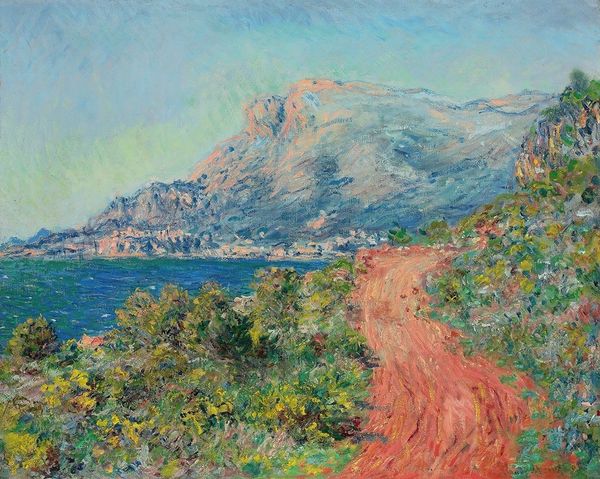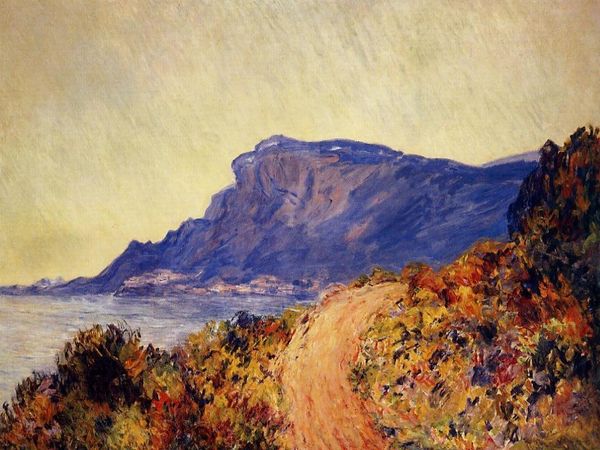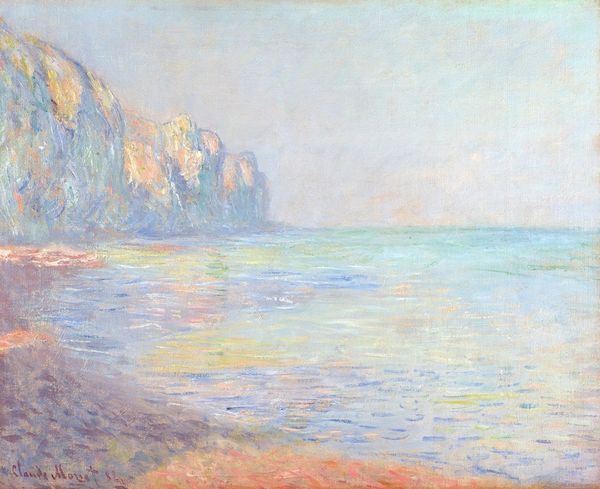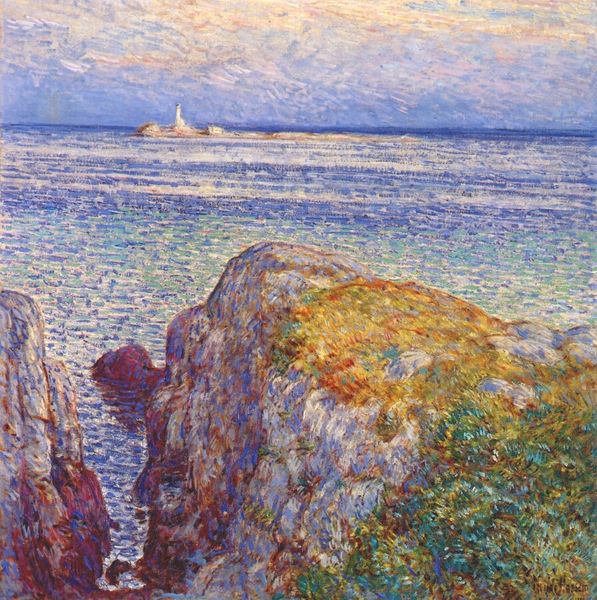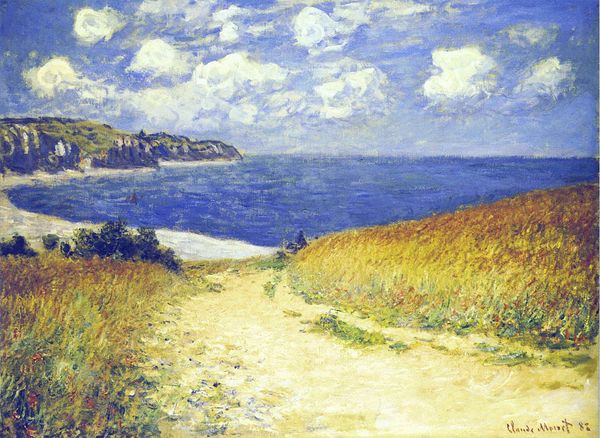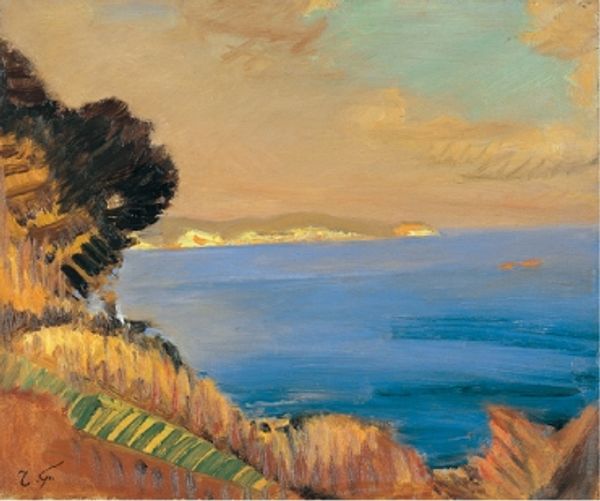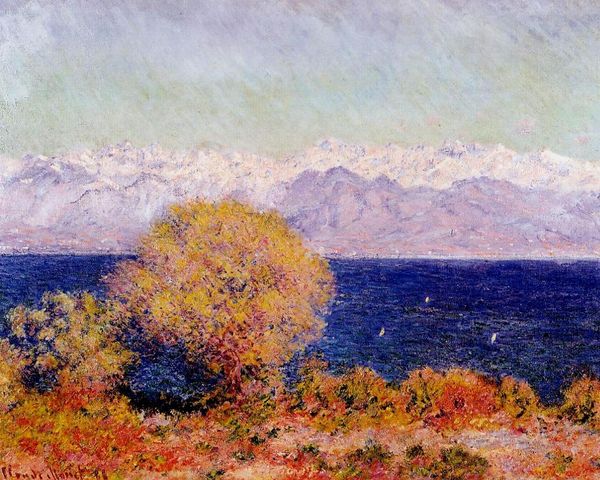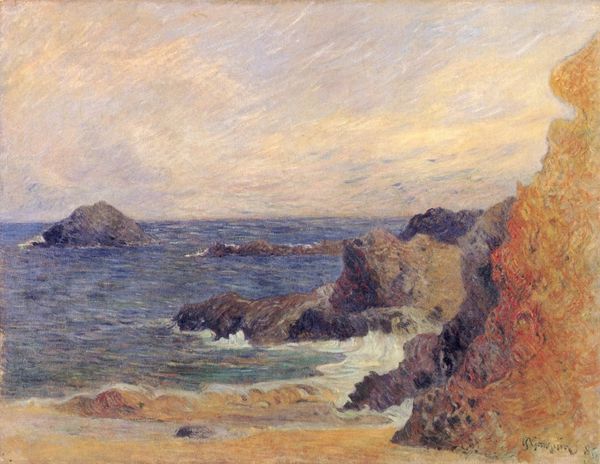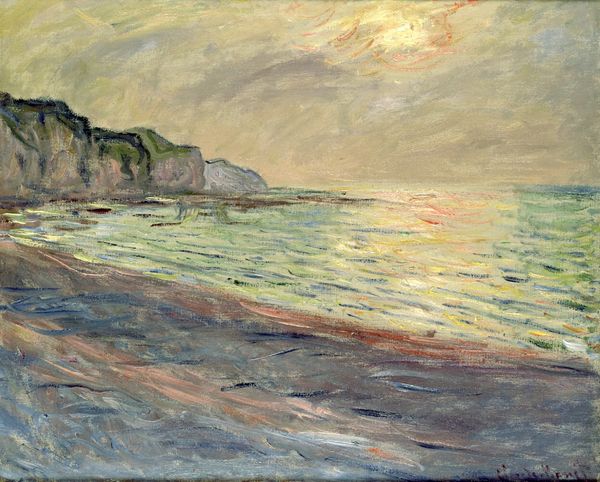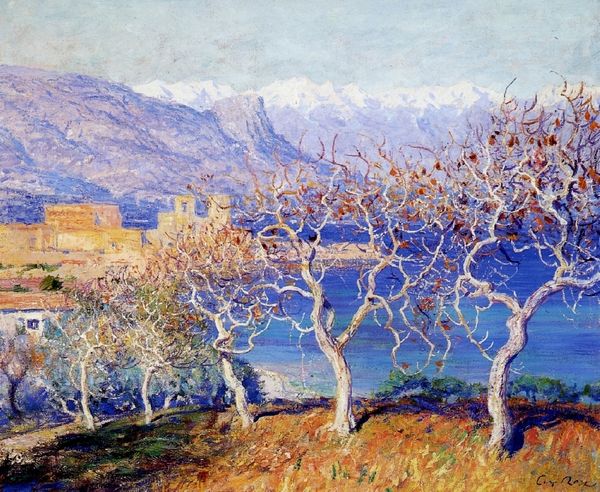
Copyright: Public Domain: Artvee
Editor: We're looking at Monet's "La Corniche near Monaco," painted in 1884 with oil on canvas. It has such a peaceful, almost hazy atmosphere. The composition is interesting, with that winding path drawing you in. What do you see in this piece, considering the context of its creation? Curator: Beyond the visual appeal, this painting is a snapshot of the evolving relationship between art, leisure, and tourism in late 19th-century Europe. The French Riviera was becoming a fashionable destination, and Monet, by painting en plein air, participates in both documenting and shaping that perception. Does the pathway suggest accessibility or exclusivity to you? Editor: I guess accessibility. The figure looks pretty small. I hadn't considered the role of art in promoting tourism though, like an early postcard! Curator: Exactly! And consider the implications: who had the time and money to travel and appreciate such scenes? Monet's paintings, displayed in galleries and private collections, reinforced and circulated the Riviera's allure to a specific social class. Can art unintentionally reinforce social stratification? Editor: That's a great point. The beautiful landscape might have served as a luxurious backdrop that emphasized inequality. Thanks, this made me see Monet's work, not just as a pretty scene, but also as a social commentary, intended or not. Curator: Precisely! Reflecting on these social contexts allows a deeper appreciation, doesn’t it?
Comments
rijksmuseum about 2 years ago
⋮
In Monet’s time La Corniche was a narrow mountain track; nowadays, it is the main road between Nice and Monaco. Here the sun is high, the lone walker’s shadow short. Monet’s colours glisten: red, green, blue – everything shimmers in the sunlight. The painting was given to the Rijksmuseum already in 1900, when Monet’s work was still entirely unknown in the Netherlands.
Join the conversation
Join millions of artists and users on Artera today and experience the ultimate creative platform.
